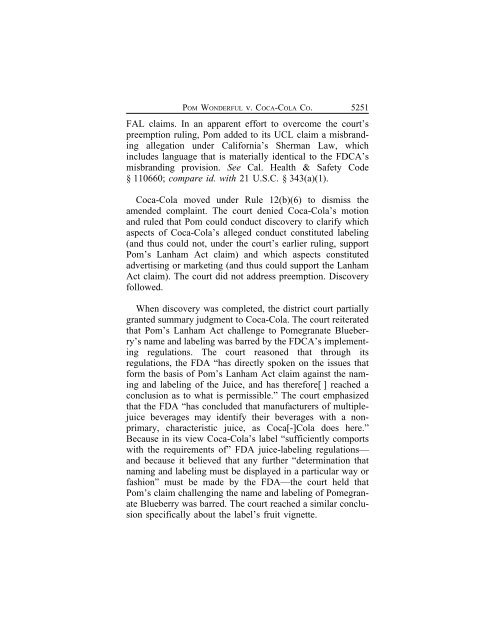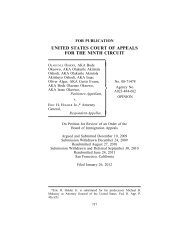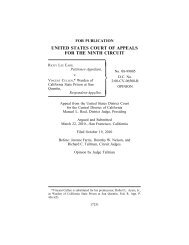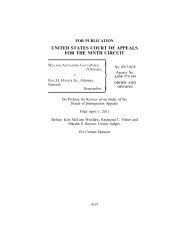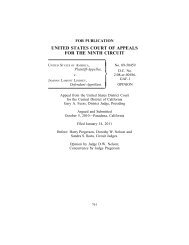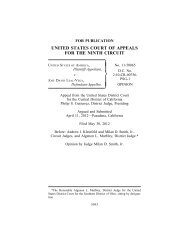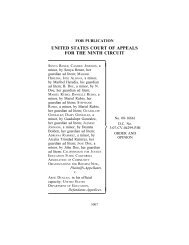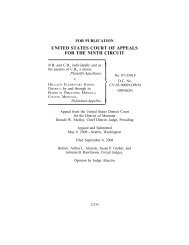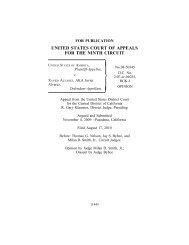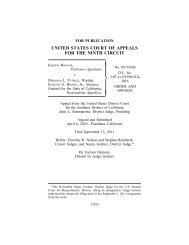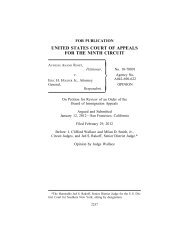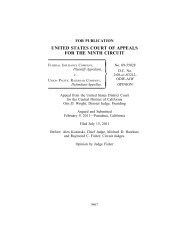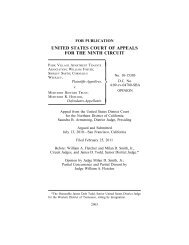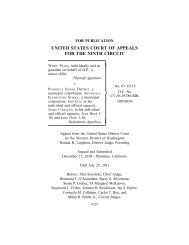Pom Wonderful v. Coca-Cola - Court of Appeals - 9th Circuit - U.S. ...
Pom Wonderful v. Coca-Cola - Court of Appeals - 9th Circuit - U.S. ...
Pom Wonderful v. Coca-Cola - Court of Appeals - 9th Circuit - U.S. ...
Create successful ePaper yourself
Turn your PDF publications into a flip-book with our unique Google optimized e-Paper software.
POM WONDERFUL v. COCA-COLA CO.<br />
5251<br />
FAL claims. In an apparent effort to overcome the court’s<br />
preemption ruling, <strong>Pom</strong> added to its UCL claim a misbranding<br />
allegation under California’s Sherman Law, which<br />
includes language that is materially identical to the FDCA’s<br />
misbranding provision. See Cal. Health & Safety Code<br />
§ 110660; compare id. with 21 U.S.C. § 343(a)(1).<br />
<strong>Coca</strong>-<strong>Cola</strong> moved under Rule 12(b)(6) to dismiss the<br />
amended complaint. The court denied <strong>Coca</strong>-<strong>Cola</strong>’s motion<br />
and ruled that <strong>Pom</strong> could conduct discovery to clarify which<br />
aspects <strong>of</strong> <strong>Coca</strong>-<strong>Cola</strong>’s alleged conduct constituted labeling<br />
(and thus could not, under the court’s earlier ruling, support<br />
<strong>Pom</strong>’s Lanham Act claim) and which aspects constituted<br />
advertising or marketing (and thus could support the Lanham<br />
Act claim). The court did not address preemption. Discovery<br />
followed.<br />
When discovery was completed, the district court partially<br />
granted summary judgment to <strong>Coca</strong>-<strong>Cola</strong>. The court reiterated<br />
that <strong>Pom</strong>’s Lanham Act challenge to <strong>Pom</strong>egranate Blueberry’s<br />
name and labeling was barred by the FDCA’s implementing<br />
regulations. The court reasoned that through its<br />
regulations, the FDA “has directly spoken on the issues that<br />
form the basis <strong>of</strong> <strong>Pom</strong>’s Lanham Act claim against the naming<br />
and labeling <strong>of</strong> the Juice, and has therefore[ ] reached a<br />
conclusion as to what is permissible.” The court emphasized<br />
that the FDA “has concluded that manufacturers <strong>of</strong> multiplejuice<br />
beverages may identify their beverages with a nonprimary,<br />
characteristic juice, as <strong>Coca</strong>[-]<strong>Cola</strong> does here.”<br />
Because in its view <strong>Coca</strong>-<strong>Cola</strong>’s label “sufficiently comports<br />
with the requirements <strong>of</strong>” FDA juice-labeling regulations—<br />
and because it believed that any further “determination that<br />
naming and labeling must be displayed in a particular way or<br />
fashion” must be made by the FDA—the court held that<br />
<strong>Pom</strong>’s claim challenging the name and labeling <strong>of</strong> <strong>Pom</strong>egranate<br />
Blueberry was barred. The court reached a similar conclusion<br />
specifically about the label’s fruit vignette.


